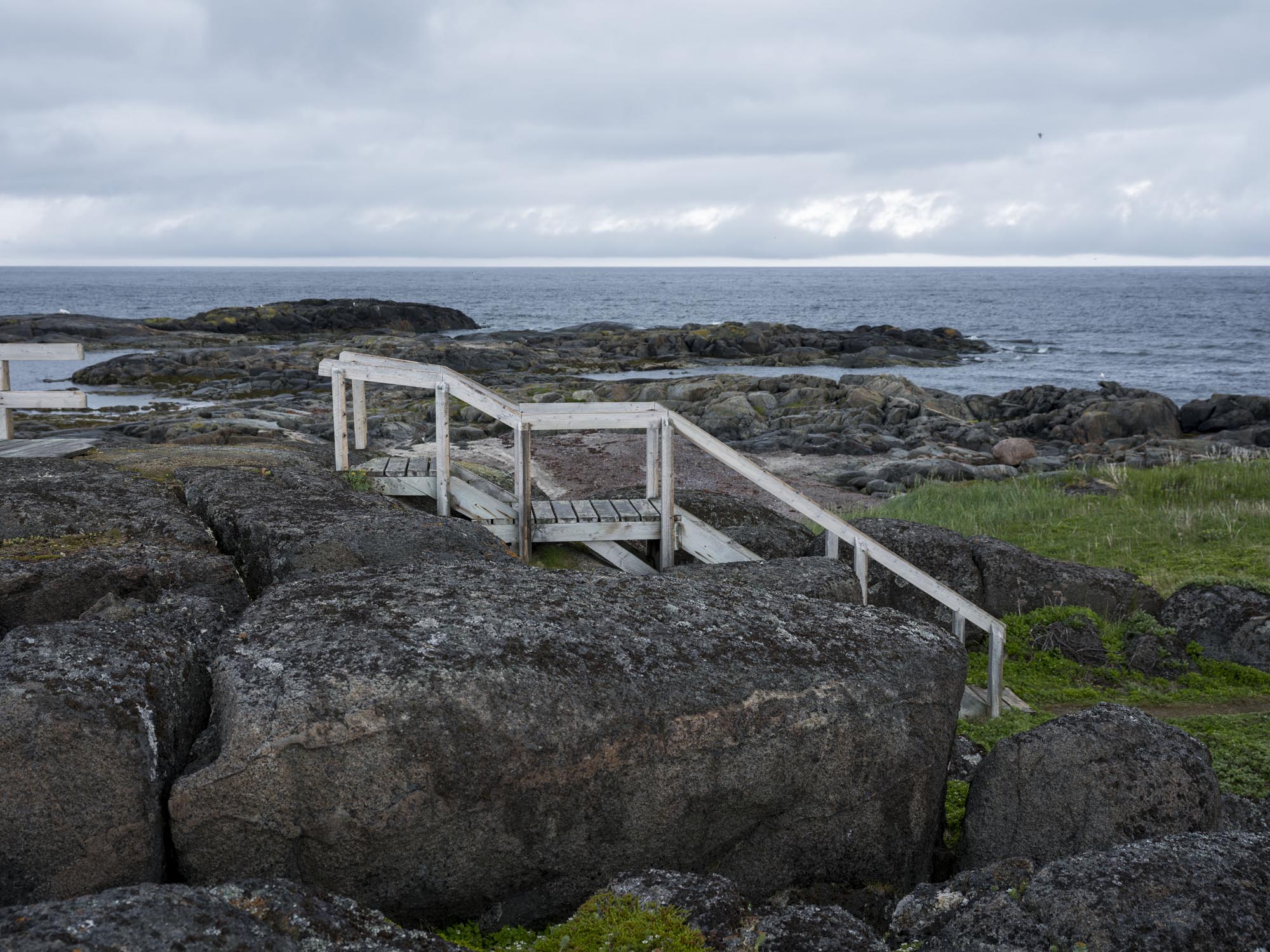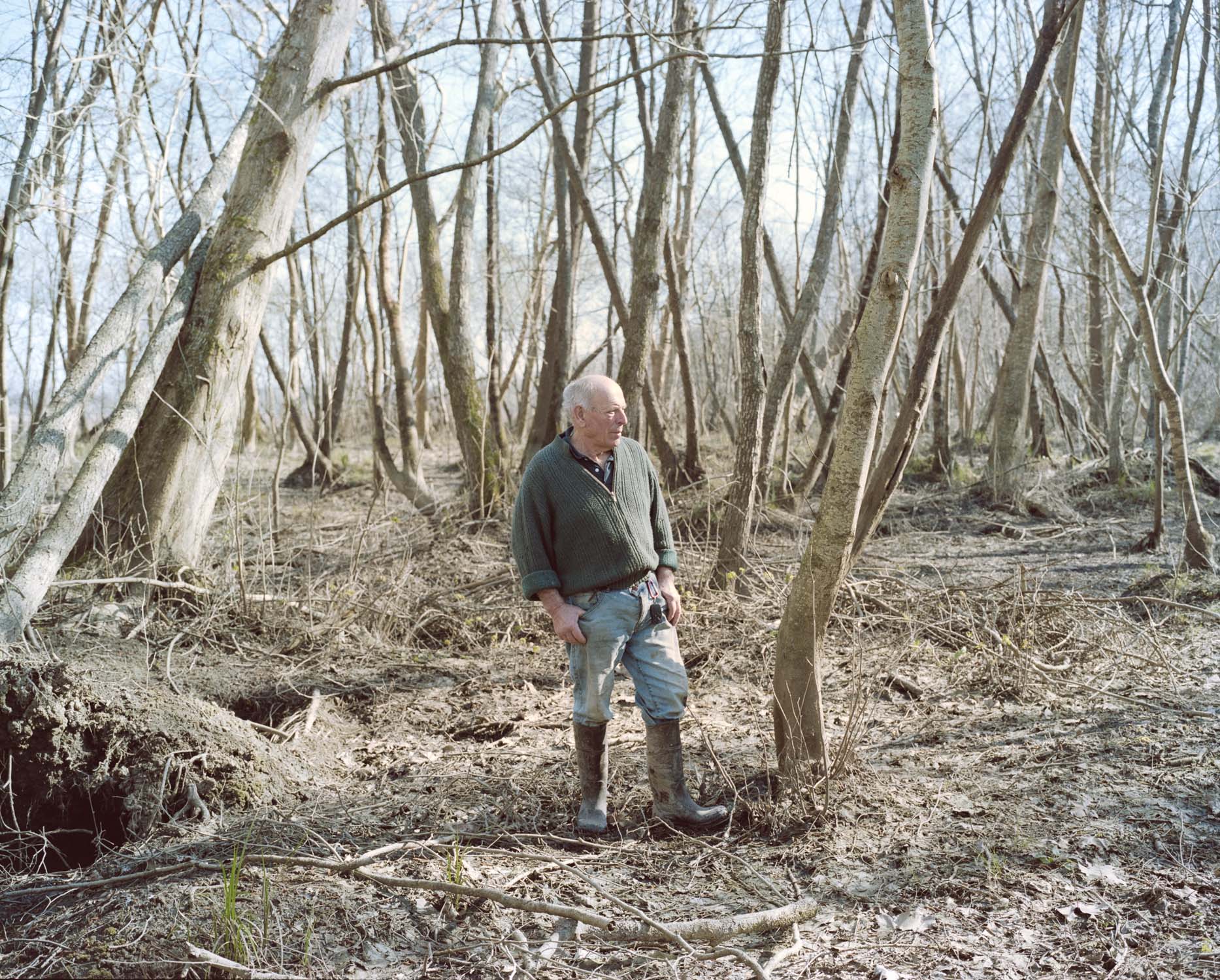
from the serie Entre fleuve et rivière, 2017-19
© Christophe Goussard

from the serie L’Adieu au fleuve, 2015
© Christophe Goussard

from the serie Adour, 2022
© Christophe Goussard

from the serie Entre fleuve et rivière, 2017-19
© Christophe Goussard
Thumbnail:
Sans titre, 1993 © Christophe Goussard
Text written for the solo exhibition Fleuves by Christophe Goussard at La Vieille Église, Mérignac, January-April 2023.
Watch also
Fleuves
Entre fleuve et rivière
Website of the artist
Christophe Goussard
To converse with the rivers, to survive the horizon, to listen to the wind's moods, to contemplate the palette of the skies and the river's undulations, to find in the furrows of the faces and the earth what cannot be said; such is the image I have of Christophe Goussard, who has always walked and photographed along the banks.
To leave.
Away.
To come back and sink into the clay and the tall grass of the land of childhood, rough, forbidden, evocative of family tales and troubling chimeras that accompany water.
Fleuves is a tender and dreamlike rereading of the work that the photographer has been doing at the water's edge for 30 years. From the Gironde Estuary to the St. Lawrence, which runs across the ocean, the exhibition carries the stories and the imaginary, the mists and the faces. The first unpublished photographs of the artist in Blaye, his native town, are presented in dialogue with those of L'Adieu au fleuve, Entre fleuve et rivière and the last series still in progress. It is a question of roots and departures, of labour, of commitments, of nature and life, of philosophy too, of spirits and poetry. Glances cross and new stories are born, from Royan to Urt, from Quebec to the Basque Country, from the father's workshop to the whales' bones...
The willows unfolded their leaves bud to bud along their upright branches. There was only the glow of the stars and the glow of the buds. But, more than any other, the new leaves of the willow are luminous, and around each bud they lit up the golden bark of the branch. Thus around the willows a copper-coloured halo was gradually spreading.1 The bird has its wings clipped. A willow tree on the land of the ancestors stands against the river, not far from the estuary and the citadel, the colours are to be imagined, who will remember what he knows?
A river is important and unique, a principle of diversity itself. Its path and its meanders, from its birth to its confluence, make it meander through changing environments, wild, concrete, joyous and arid lands of life and labour; it accosts souls, beasts, living things, yet it remains the same river. From the glaciers to the sea, it carries diversity and unity2. It does not surprise me that Christophe Goussard, who left for the farthest reaches of the world, returns regularly and without premeditation to the banks of rivers. The landscapes conceal the forces that were exerted there, the harshness of the cold winds, the memory of the child he was. It doesn't surprise me either that after starting his work with portraits, family, communities, it was the landscapes without figures that took over. For a long while.
To leave.
Away.
To come back and sink into the clay and the tall grass of the land of childhood, rough, forbidden, evocative of family tales and troubling chimeras that accompany water.
Fleuves is a tender and dreamlike rereading of the work that the photographer has been doing at the water's edge for 30 years. From the Gironde Estuary to the St. Lawrence, which runs across the ocean, the exhibition carries the stories and the imaginary, the mists and the faces. The first unpublished photographs of the artist in Blaye, his native town, are presented in dialogue with those of L'Adieu au fleuve, Entre fleuve et rivière and the last series still in progress. It is a question of roots and departures, of labour, of commitments, of nature and life, of philosophy too, of spirits and poetry. Glances cross and new stories are born, from Royan to Urt, from Quebec to the Basque Country, from the father's workshop to the whales' bones...
The willows unfolded their leaves bud to bud along their upright branches. There was only the glow of the stars and the glow of the buds. But, more than any other, the new leaves of the willow are luminous, and around each bud they lit up the golden bark of the branch. Thus around the willows a copper-coloured halo was gradually spreading.1 The bird has its wings clipped. A willow tree on the land of the ancestors stands against the river, not far from the estuary and the citadel, the colours are to be imagined, who will remember what he knows?
A river is important and unique, a principle of diversity itself. Its path and its meanders, from its birth to its confluence, make it meander through changing environments, wild, concrete, joyous and arid lands of life and labour; it accosts souls, beasts, living things, yet it remains the same river. From the glaciers to the sea, it carries diversity and unity2. It does not surprise me that Christophe Goussard, who left for the farthest reaches of the world, returns regularly and without premeditation to the banks of rivers. The landscapes conceal the forces that were exerted there, the harshness of the cold winds, the memory of the child he was. It doesn't surprise me either that after starting his work with portraits, family, communities, it was the landscapes without figures that took over. For a long while.
It is another fleeting inscription on the page of the earth, which we must grasp, which we would like to understand. Without knowing why, it seems ready to give up a secret; otherwise, how would it have stopped us? So, we look and we dream; it is not really a reading, a research; we let the images come, we let them go. The first ones that come to mind are not necessarily the simplest, the most natural, nor the most accurate; on the contrary, they are rather the most made up, those of others, those that float, always available, inside you.3
Christophe Goussard returns to humans with the Adour, after having been able to read the tide's surge, to be surprised at recognising the gestures and traditions of the past, to learn to be wary of the dawn, to unmask monsters on the islands of the new land.
His pictorial universe has been built and consolidated thanks to the landscapes, to their understanding beyond their contemplation, to his affection for others, for exchanges. He follows the horizon, the people and the rivers, always, and finds without looking for them, the same paths, elsewhere.
— Émilie Flory
Pau, December 2022
1. Jean Giono, Que ma joie demeure, 1959
2. Thoughts and remarks by the poet Pierre Vinclair in Les lieux du poème, Poésie et ainsi de suite, January 2022 (France Culture)
3. Philippe Jacottet, Travaux au lieu dit l’Étang in Paysages avec figures absentes, 1976. Habiter le monde poétiquement, Poésie Gallimard, 2019